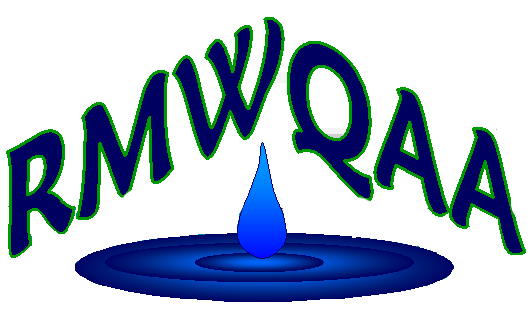Contributed by Tyler Eldridge
Tyler Eldridge is a volunteer member of the RMWQAA Board, prior laboratory analyst, and current manager of Greeley’s Wastewater Treatment and Reclamation Facility.
My interest in biology as a child helped foster my love for science as I grew older. I used to collect as many books and fact sheets of animals as I could. Growing up, I was fascinated with the nature documentaries, raised on “The Crocodile Hunter,” “Planet Earth,” and “Blue Planet.” You can imagine the older nature books and documentaries didn’t put a whole lot of focus microbial organisms, as all the fun seemed to be in finding which animal was the biggest, heaviest, fastest, strongest. As course work expanded, lab work became more incorporated, and work with microscopy

led to a new interest in microbiology, a study focused on the incredibly diverse microbiological organisms and systems that impact nearly every facet of our day-to-day lives.
I wasn’t sure where exactly my biology degree would take me. I had high hopes of being a marine biologist at one point, but that is tough to do when much of your time is spent a mile above sea level and thousands of miles from the ocean. I certainly didn’t anticipate wastewater treatment as an opportunity to put my degree to the test, and it’s safe to say I was even quite ignorant as to what the process of treating wastewater looked like. Even when I began working in the City of Greeley’s Wastewater lab, the focus seemed to be on the chemistry side, analyzing concentrations of ammonia, phosphorus, and BOD to prove our worth. As I saw how these microscopic entities, such as bacteria, protozoa, and fungi, play a pivotal role in breaking down organic matter and nutrients I started to wonder why the lab didn’t also have a microscope like Operation’s. After all, outside of compliance monitoring, much of the work the lab performs is to help inform how the process is operating overall, and the efficiency of treatment processes largely depends on the microbial communities present. Operational challenges, such as odor complaints or excessive foam, can often be traced back to microbial imbalances. Microscopy provides insights into these issues, enabling teams to pinpoint causes and develop solutions. Why not combine efforts and allow for a more robust chemical and biological focus between Lab and Ops? The more eyes you have on a sample, the better opportunity you have to collaborate, interpret, and understand what microbiology is telling you about your plant.
It wasn’t until recently that we went an entire year without having to replace something expensive in the lab, leaving us with a little extra in the budget as the year closed. This seemed to be the perfect opportunity to see if there was any interest in getting the lab a microscope and some training in microbial analysis. Luckily, that interest was apparent, and a microscope was purchased for the plant’s compliance and process lab. While this was not new to Operations staff, it would be new to the Lab staff, and we felt that including the lab in microbial analysis would be a great opportunity to further develop a collaborative approach to problem-solving across the plant while improving process knowledge amongst those not in Operations. This past year we sent Ian (Operations) and Callie (Lab) to a local two-day Wastewater Microbiology & Process Control course, and the returns were instantaneous. Both came back with a new and refreshed understanding of what we can learn from analyzing the microbial systems in our plant, and the ability to put a numeric value on the biological system based on several factors they can determine from microscopic evaluation. They put in place a more frequent and robust microscopy plan and generate plenty of chatter amongst staff when they find and share new or exciting microbes from the process. Increasing the frequency while expanding the number of analysts able to do the work has allowed for more extensive evaluation of a system that may be more subjective at times than other lab parameters. 
I’ve noticed more process-related discussions occurring between Lab and Operations staff, which ultimately helps build a more informed treatment plant. One thing I struggled with early in my lab career was understanding the process implications from our findings, so helping foster additional communication and collaboration between staff was something I set my sights on. Wastewater is a complex mix of organic and inorganic materials. The efficiency of treatment processes largely depends on the microbial communities present, and it can be challenging to build a full understanding when the processes responsible are invisible to the naked eye. By examining samples under a microscope, we can identify key species that contribute to effective biodegradation, which informs process optimization.
I understand there are likely many places where this overlap between Ops and Lab staff on the microscopy side may be common practice, but for us it was a new adventure. Looking under the microscope has helped break up some of the day-to-day monotony that can build up over time, and the excitement when a particularly large bristle worm or strange looking suctoria is found is palpable. I even have the chance to jump out and grab a sample to look at for myself from time to time, which brings me a calming sense of wonder (assuming no filaments are present) about nature and biology that I often miss. If you don’t often get to see what’s under the scope, reach out to your operations team to get an understanding of just how much they learn from their microscope analysis, or get you a microscope and start fostering additional communication yourself!

 Welcome to the
RMWQAA Website!
Welcome to the
RMWQAA Website!  Welcome to the
RMWQAA Website!
Welcome to the
RMWQAA Website!